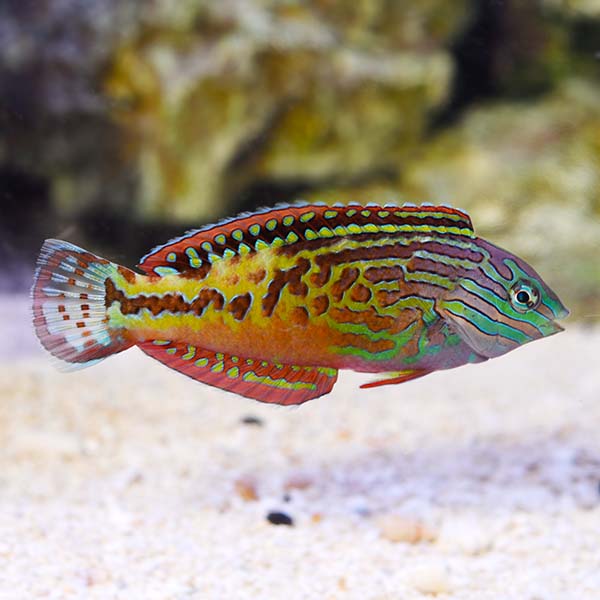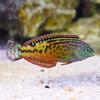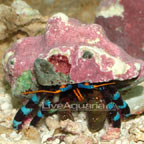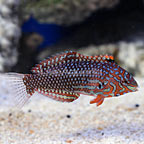
Additional locales and sizes may be available!
Additional locales and sizes may be available! Email me when availableQuick Stats
What do these Quick Stats mean? Click here for more information
What do these Quick Stats mean? Click here for more information
Overview
Like other members of the genus Macropharyngodon these fishes require a fine sandy substrate as they bury themselves at night for protection. They require a very well established aquarium as they naturally hunt for small crustaceans throughout the day.
Leopard Wrasse are challenging fish to adapt to a captive environment, but in the hands of the expert reef aquarist who can provide these fishes with the proper care and environment, they can thrive and make for an incredible display. It is ideal to introduced Leopard Wrasse to the display aquarium well before any larger or more active fishes are introduced, so that they have ample time to settle in and adapt to their new environment, and start feeding on prepared foods well. If trying to maintain a small group of these fishes, introducing them simultaneously into the display is ideal. Like other Labroids these fishes have the ability to change sex, as the most dominant fish in the group can turn into a fully functioning male.
This unique wrasse is found around the East African coast in the Western Indian Ocean. The healthiest fishes hail from the Maldives, as this is the only region we offer the Blue Star Leopard Wrasse from.
The Blue Star Leopard Wrasse diet should include vitamin enriched frozen mysis shrimp, vitamin enriched frozen brine shrimp, and other meaty foods along with a high quality marine flake and marine pellet food.
Approximate Purchase Size: Small 1" to 2", Medium 2" to 3", Large 3" to 4"
|
Please note: We guarantee that ALL aquaria species we offer will arrive alive and in good condition. However, because of the increased level of care required for this particular species, it has been designated as "Expert Only." This species is recommended only for the expert aquarist, zoo, or research institution. “Expert Only” aquatic life is exempt from our extended guarantee after their arrival. |















